It was the most romantic, beautiful, and educational cruise we’ve ever taken, and it happened to be our anniversary. We cruised all the way down the Danube from our port of departure in Passau Germany, not far from the black Bavarian Forest. We then drifted through numerous towns and cities in Austria as we caught sight of the majestic Alps. Finally, we traveled along the Slovakian and Hungarian borders and ended on the banks of the Danube in one of Eastern Europe’s liveliest cities, Budapest. From the beautifully verdant scenes of the Salzkammergut Lake District in Austria to the aristocratic cultural capital of the western world in Vienna; this was the most picturesque, unforgettable, relaxing, romantic, and enlightening cruise we've ever taken.
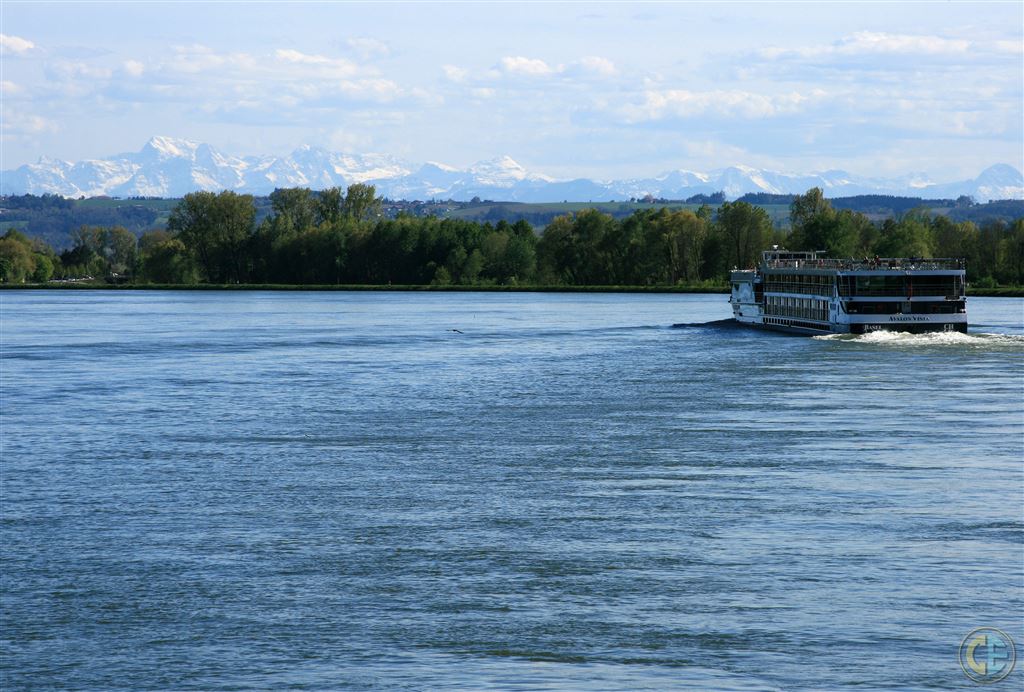 The beautiful blue Danube River
The beautiful blue Danube River
How the Story of our 10 Day River Cruise from Prague to Budapest Begins
For years we wanted to take a trip across Europe. For all people of the United States who love to travel, traveling across Europe is inevitably on one’s bucket list. How would we do it? Which countries would we visit? Even as these questions remained unanswered we still scheduled a date and time. This date, unfortunately, was delayed many years because of a giant sinkhole under our driveway; subsequently depleting all our European vacation money. Now, this did not stop us from traveling domestically (you know how we travelers do), but it did put off this trip. Who knew a sinkhole could cost tens of thousands of dollars?
Finally, some years and a few vacations later, my wife and I came to an accord: we would cruise the Danube River to see Europe. Why? We thought that would be a terrific way to see many European countries while not having to drive and make accommodations in each destination. Without question, this was a smart decision and one we are delighted we made.
Starting in Prague
I know you are probably thinking, “The Danube River does not run through Prague nor the Czech Republic.” Yes, that is true. However, if I am going to make a 5000-mile trip to Europe I want to see as much as possible. And Prague was on my bucket list so why not kill two birds with one stone. Fortunately, the cruise line we chose (after much research) was on the same page and had an itinerary that began in Prague.
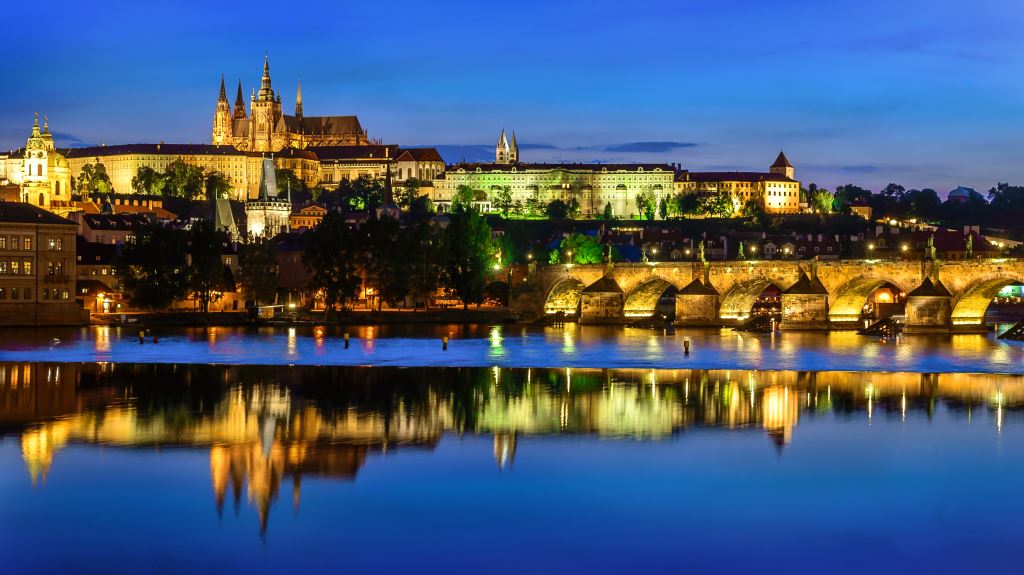 Prague at night from the Vltava River.
Prague at night from the Vltava River.
The Bohemian capital of Prague is saturated with history, natural beauty, Gothic and Romanesque architecture, and enchantment. It is clearly one of the premier cities in all of Europe and we were able to taste much of the flavor of the city in the 2.5 days we were there. We strolled along Prague’s Vltava River, wandered the gardens of the Wallenstein Palace, walked the tourist inundated Old Town Square while being amazed by Prague’s Astronomical Clock. We examined in detail the historic Charles Bridge and witnessed the renown political setting of the John Lennon Wall.
Oh, did I mention that we ventured to the Czech Republic countryside to taste Bohemian wines? And this was just the beginning!
After a perfect 2 days in Prague, we took a motor coach through the wonderfully forested countryside of the Czech Republic and Germany to our port of departure in Passau Germany.
Our Port of Departure in Passau Germany
The “City of Three Rivers” receives its name for obvious reasons. Ideally located at the confluence of the Rivers Inn, Ilz, and Danube; Passau was where our river cruise ship was docked and where we began our cruise.
However, the day’s excursion began with a guided walk through Passau’s maze of narrow cobblestone streets lined with beautiful blue-blooded houses. Pearly white and rose colors mixed with sunlight adorned the main attraction of the town; St. Stephen’s Cathedral. This masterpiece of Italian baroque architecture houses one of the world’s largest church organs with 17,774 pipes and 233 registers. Of the multitude of churches and cathedrals we’ve seen over the years, I would say that this was the most ostentatious…and that says much about this lavish structure.
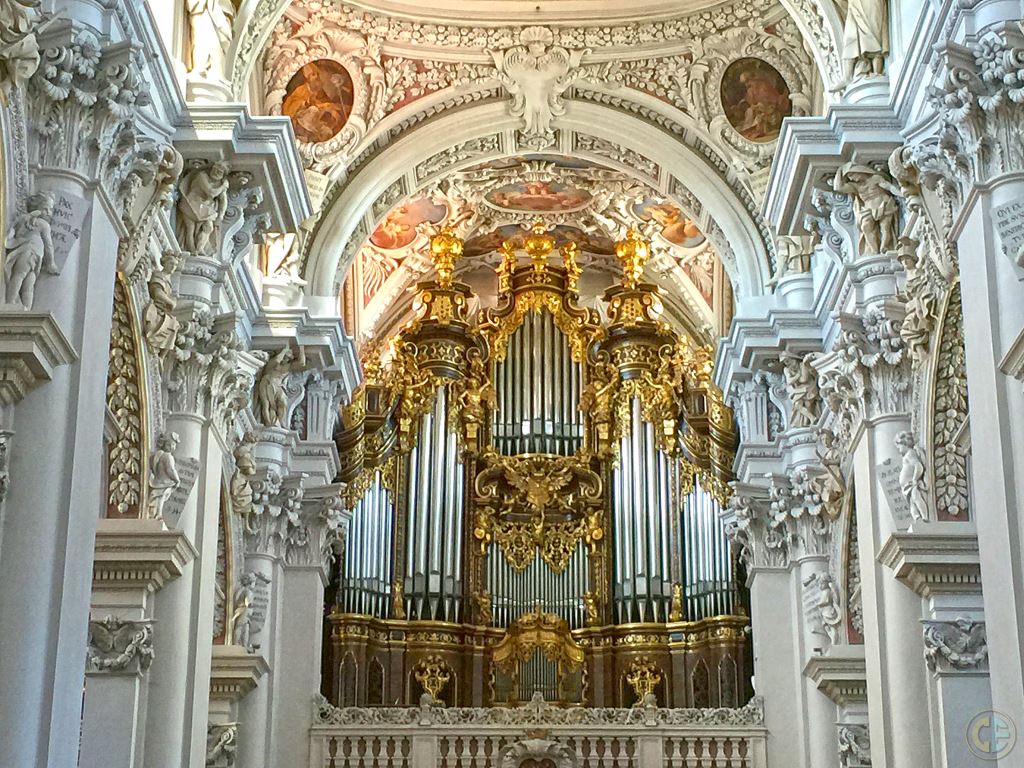 St. Stephen’s Cathedral organ
St. Stephen’s Cathedral organ
It was now time to begin the magnificent cruise which would include some of Central Europe’s splendid capitals—Prague, Vienna, Bratislava, and Budapest—as well as many history-laden small towns that dot the scenery along the way: Linz, Salzkammergut (Seitz-kamma-goot), Grein, Melk, Weissenkirchen, and Etyek.
Stories, Small Austrian Riverside Towns, and Vienna
Linz and the Salzkammergut Lake District
Our first stop was Linz Austria. Linz is Austria’s third-largest city and an important river port where culture plays a significant role in everyday life. Interestingly, our experience in this city was a surreal one. As we walked around the very busy and populated downtown area at night, we were surprised by what we saw…or should I say, didn’t see. In most cites one sees a mix of different ages of people however at night in Linz we only saw youth. It seemed like everyone was 25 years old or younger. It was weird and surreal. I’ve never witnessed a city with so few adults. Of course, the adults were somewhere, just not walking the lively streets at night.
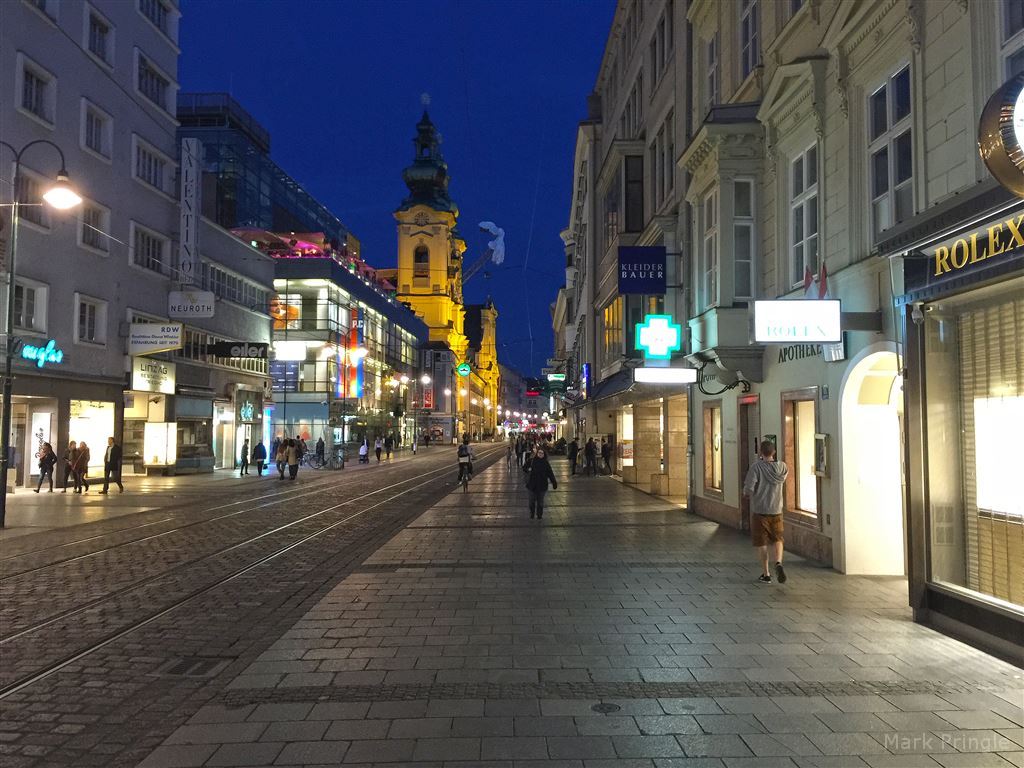 Linz at night.
Linz at night.
That was at night. Early the next day, we took a wonderfully romantic Austrian countryside excursion to the Salzkammergut Lake District. This was, after all, our anniversary.
It was during this tour that we learned much about Austria. For instance, during our ride through the countryside, we saw huge structures in the middle of fertile fields. We asked our tour guide what those buildings were and she said they were the homes of farmers. Homes of farmers? How could that be? We found out that farmers in Austria are rich because of a decision the country made years ago concerning how they would produce food. See, Austria is not a large country and could not compete on an international scale by exporting its produce. So, they decided to produce healthy, non-genetically altered, and chemically free pesticide foods. What a novel idea. While producing food this way is more expensive for the farmer and the people, it is healthy, and the only food Austrians will eat. The farmers and the people reap the benefits.
Arriving in Salzkammergut
When we arrived in the Lake District, with its 70 lakes, it was rainy, and the weather was not very pleasant otherwise. However, the luscious green of the hills and fog-filled fields along the way, combined with striking mountain cliffs and romantic villages covered in low-lying clouds, created a beautiful experience and delightful day.
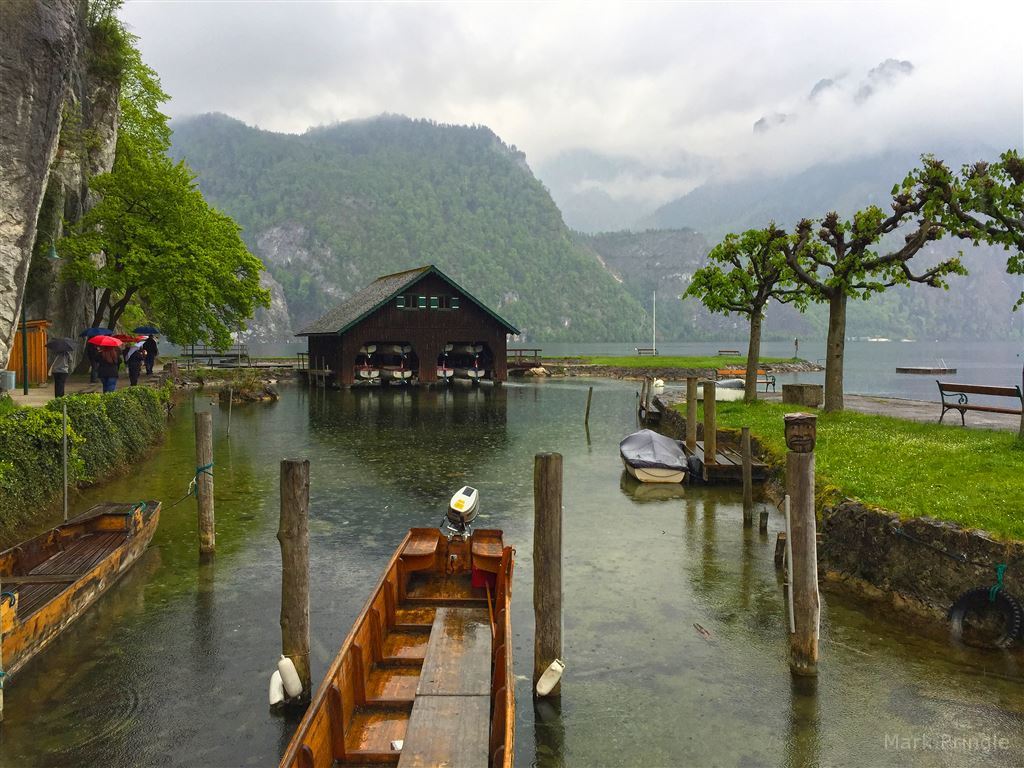 Lake Wolfgang
Lake Wolfgang
As we were perched on top of a hill with a majestic view, we saw the village and home where Wolfgang Amadeus Mozart’s mother lived and was born; in Mozarthaus St. Gilgen. Additionally, we visited numerous beautiful villages and lakeside towns; the must-see highlights being St. Wolfgang im Salzkammergut and Hallstatt. The historic village Hallstatt is a UNESCO "World Cultural and Natural Heritage" site. Overlooking Lake Hallstatt, this traditional village is small but packed with cultural events, shops, and things see and explore. St. Wolfgang im Salzkammergut has a similar feel and its setting on Lake Wolfgang is romantic and intimate. It is also a town full of mirth and merriment, even in the rain.
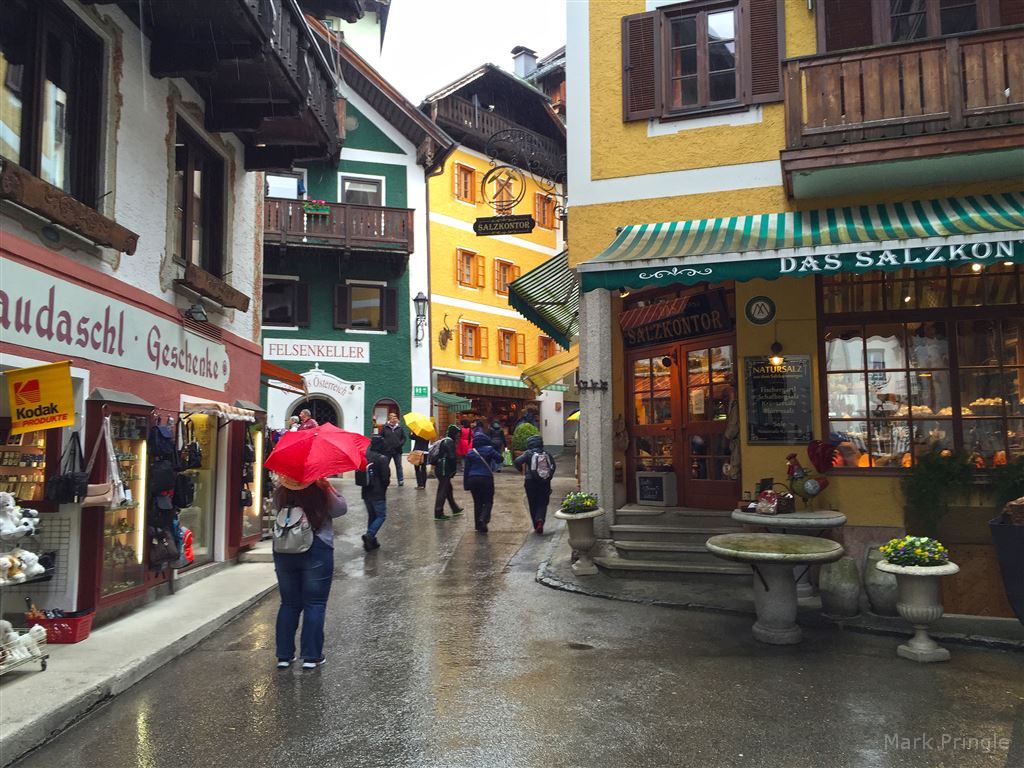 St. Wolfgang Im Salzkammergut
St. Wolfgang Im Salzkammergut
We also really enjoyed the beautiful lake-side town of Mondsee. It is an absolute must-see, in part because of spectacular lakeside views and the Basilica St. Michael which is situated right in the middle of the town center. This church reached international fame because the wedding scene in the movie "Sound of Music", with Julie Andrews and Christopher Plummer, was filmed inside. What’s interesting is that the day we visited this famous church, the city was having an antique car show in front of the basilica. What a contrast!
After a day filled with sights, the motor coach took us to the next destination, Grein, where we met up with the ship which had moved on from Linz.
The History-Laden Small Austrian Towns of Melk and Weissenkirchen
The next stops included ports of calls Melk and Weissenkirchen Austria. In Melk, we visited one of Europe’s largest monasteries, the magnificent Benedictine Melk Abbey. Its splendid architecture is famous worldwide and is a UNESCO’s world cultural heritage site. The Baroque building is situated on high and overlooks the beautiful Danube river. The Abbey has one of the most impressive library collections I’ve ever seen with over 80,000 printed books and 2,000 manuscripts. It also is known for liqueurs (you see a theme here) made by Monks…although I was not impressed.
Once we left Melk, we sailed into the picturesque Wachau Valley, a UNESCO World Heritage Site, on the way to the pretty small town of Weissenkirchen (“White Church”). After a guided walk through the pleasant town, we were on our way to Vienna; in my opinion the cultural capital of the Western world.
Vienna: Cultural Capital of the Western World and a Childhood Dream
Now I see why Vienna is called the “City of Music” and the place that inspired the creative genius of Mozart, Beethoven, and Strauss.
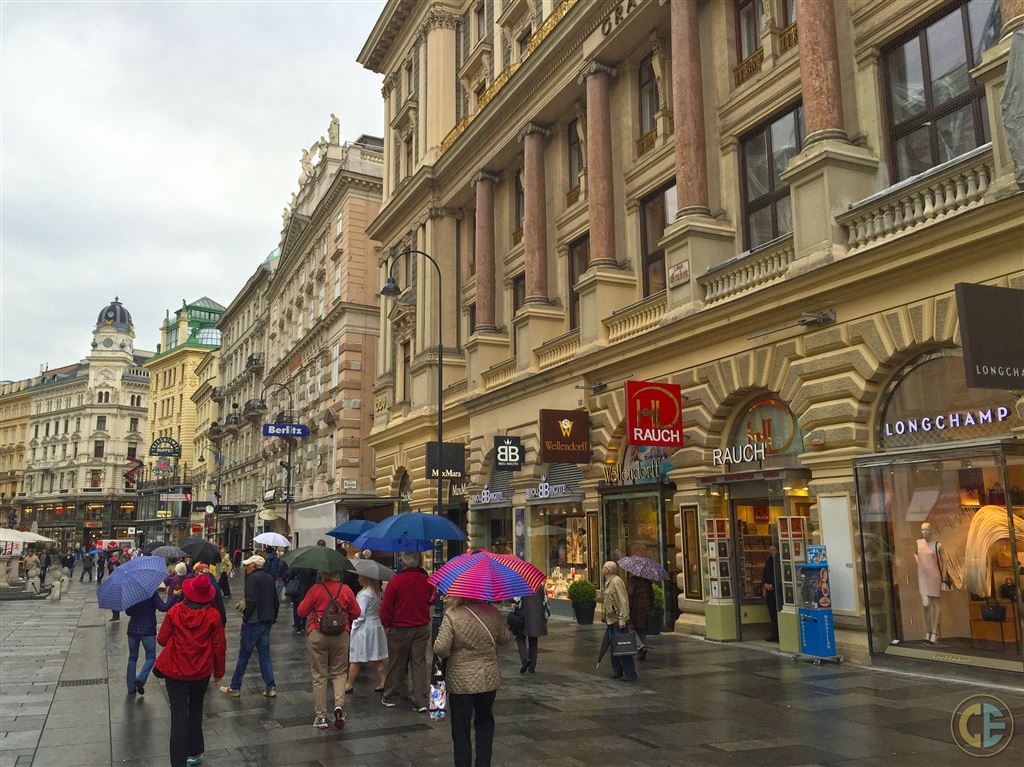 A rainy stroll along Kärntnerstrasse.
A rainy stroll along Kärntnerstrasse.
Our day began with a walk through downtown Vienna. It was a slightly rainy day, but that was inconsequential. As we went through Austria’s aristocratic capital, once the center of the mighty Habsburg Empire, I was spellbound by the showcase of city’s diverse architecture. How can a city have so many divergent architectural styles within view and yet they all work in harmony? That’s impossible, isn’t it? No, Vienna says it is possible.
When I was a child growing up in New Jersey in the 70’s, I would watch the marvels of the "World Famous" Lipizzaner Stallions on television. At the time I didn’t know why they were famous, but I was still captivated as a young boy…as was most of America back in those days. Well, on our walk-through Vienna guess what crossed directly in front of me? That’s right, a stableman walking a few Lipizzaner Stallions to their home. To my further surprise, I glanced to my right and there were the stables…or should I say a 5-star “Horsetel” (see what I did there?). Yes, this was their majestic, multi-story home and a piece of my childhood had come immediately to life. I will always remember that feeling!
We continued our stroll to Kärntnerstrasse (English: Carinthian Street), the most famous shopping street in central Vienna, and many other famous destinations. In fact, there were too many sights to remember or note considering the brief time we were there and our frenetic pace. Nevertheless, one place stood out; Schonbrunn.
Schonbrunn Palace
Schonbrunn, the former summer residence of the Imperial Habsburgs family, is considered one of the most beautiful baroque palaces in Europe. As a palace and gardens, it is on par with Paris’ Versailles and even more decadent than the Summer Palace of Peter the Great in St. Petersburg Russia. A Brief History of Schönbrunn Palace (House of Habsburgs).
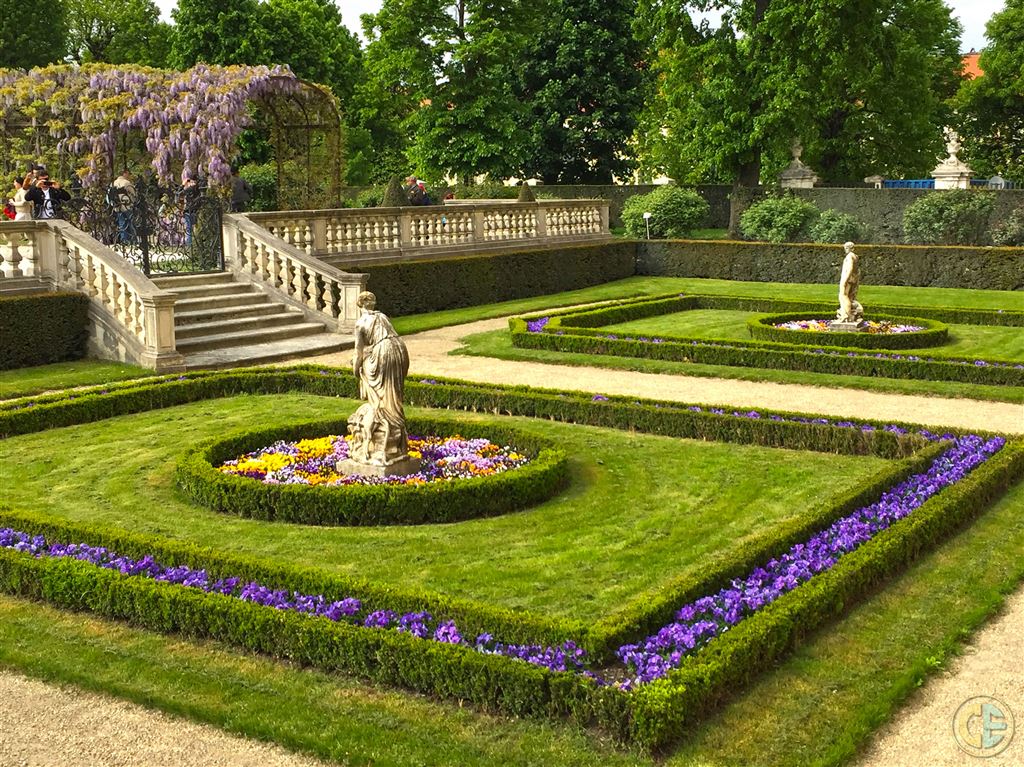 A small section of the gardens of Schönbrunn Palace
A small section of the gardens of Schönbrunn Palace
Vienna is one city that I will travel too again so I can explore its wonderful culture in detail.
Bratislava Slovakia
Our next stop, Bratislava. This is a city that seems to have much potential but cannot make the transition to a true cultural destination because of logistical problems associated with its Communist past…and present.
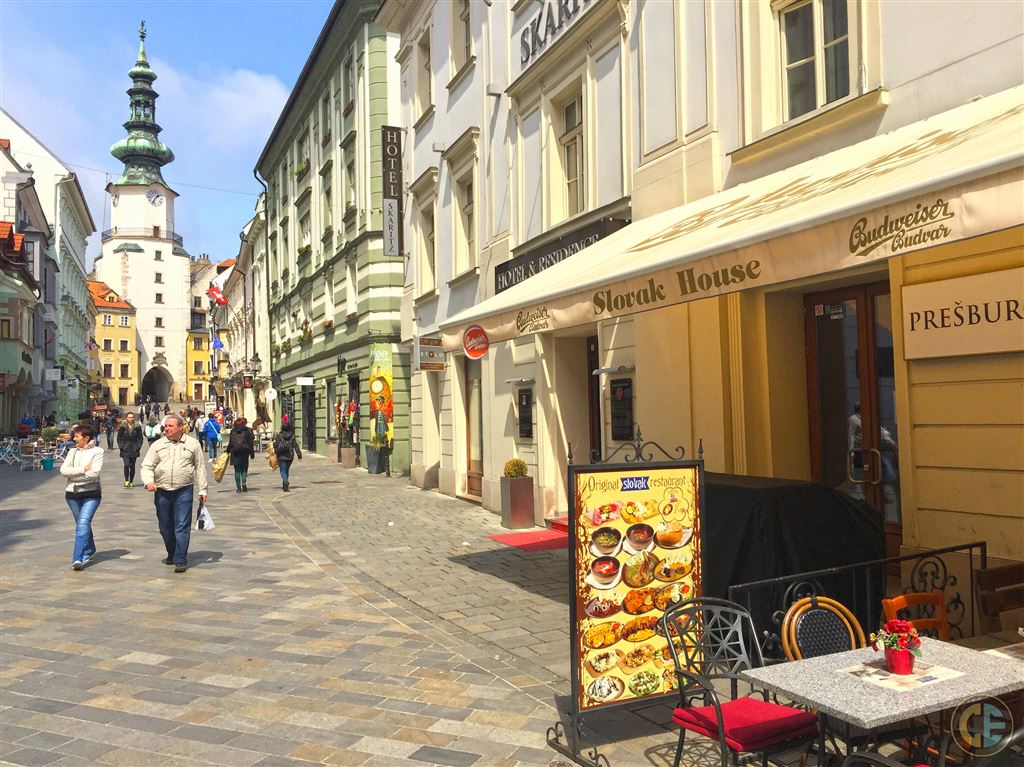 Bratislava Old Town
Bratislava Old Town
This interesting capital of Slovakia, located in the foothills of the Carpathian Mountains by the borders on Austria and Hungary, was quiet. While its Old Town was pleasant, it seemed to blend in indistinguishably with many European “Old Towns” we’ve visited. Let’s just say you will never confuse it with Prague's Staré Mesto (Old Town). Still, I am glad that we visited because of the regional history lesson we received during our tours. It was educational.
Wine Tasting in Etyek Hungary, Palinka, Oh…and Budapest
So, this is the famous Budapest, the old Hungarian capital perched on the banks of the Danube and joined by bridges. Yes, you are everything people say you are…but onto less trivial things, wine tasting in Etyek.
Once again, a wine tasting tour was part of our excursion. However, this time it was THE excursion. It included a wonderful countryside experience to the Etyek-Buda wine region only 30 minutes away from the capital of Budapest. Frankly, it was the most memorable and fun wine-tasting tour we’ve ever experienced…and there have been many. Why was it so memorable? Well, I will tell you. Most of it had to do with our surprisingly young guide.
Of course, we enjoyed our stroll through the stunning vineyards of Etyek and views of the fascinating landscape of the youngest and the fastest developing wine region of Hungary. However, our guide was the key. When I first saw this young man, who couldn’t be more than 26 years old, I thought to myself, what could he possibly know about wine. Well, to my surprise…everything. Come to find out that his father is someone called the “Mountain Judge”. The mountain judge ensures that the region’s wine-producing methods are followed. So, this young man lived wine from the womb and knew more about it than any person I’ve ever met. If that’s the case, what did his father know? Anyway, as part of the hospitable stops at small, family-run wineries we learn the secrets of winemaking from the local winemakers. We also learned the winemaking history of the region and how it was influenced by German and Russian occupation over the years. And then there was Palinka.
What is this, Palinka?
In between stops, our young guide spoke of this fruit-based brandy-like liquor called Palinka. I had never heard of it, but it peaked the interest of everyone on the small tour bus. Of course, you can’t bring up something like that and then not include it in the tour, so our host graciously made an impromptu stop at the home of one of the local winemakers who he knew would have homemade Palinka.
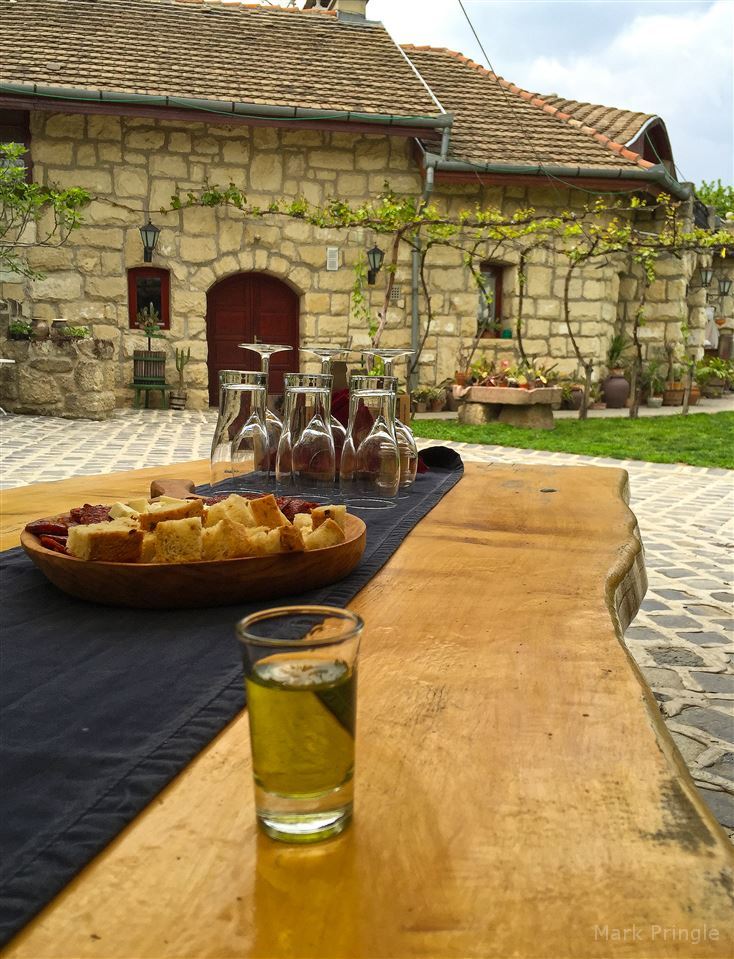 Palinka
Palinka
This wonderful host brought out crackers, cheese, wine, and Palinka. The Palinka was magnificent and strong. It is the Hungarian version of great-smooth American moonshine or Russian Vodka. But, this is not made from grain, nor does it originate with potatoes. It is made from fruit and it is smooth and powerful, without a hint of fruitiness. Let’s just say the rest of the tour back to Budapest was even more relaxing.
Our Anniversary’s End and Budapest
I’m not going to elaborate on Budapest because everyone knows it is one of the top three European cities and there is a wealth of long-winded information available about the city. I don’t want to add to its perfectly majestic arrogance. I will not comment on its spellbinding nighttime views which rival or even surpass Paris. I will not even mention its rich history. No, I will just a let a few photos add to the legend of Budapest and quite possibly the best and most romantic anniversary trip we’ve taken (Photos of Budapest).